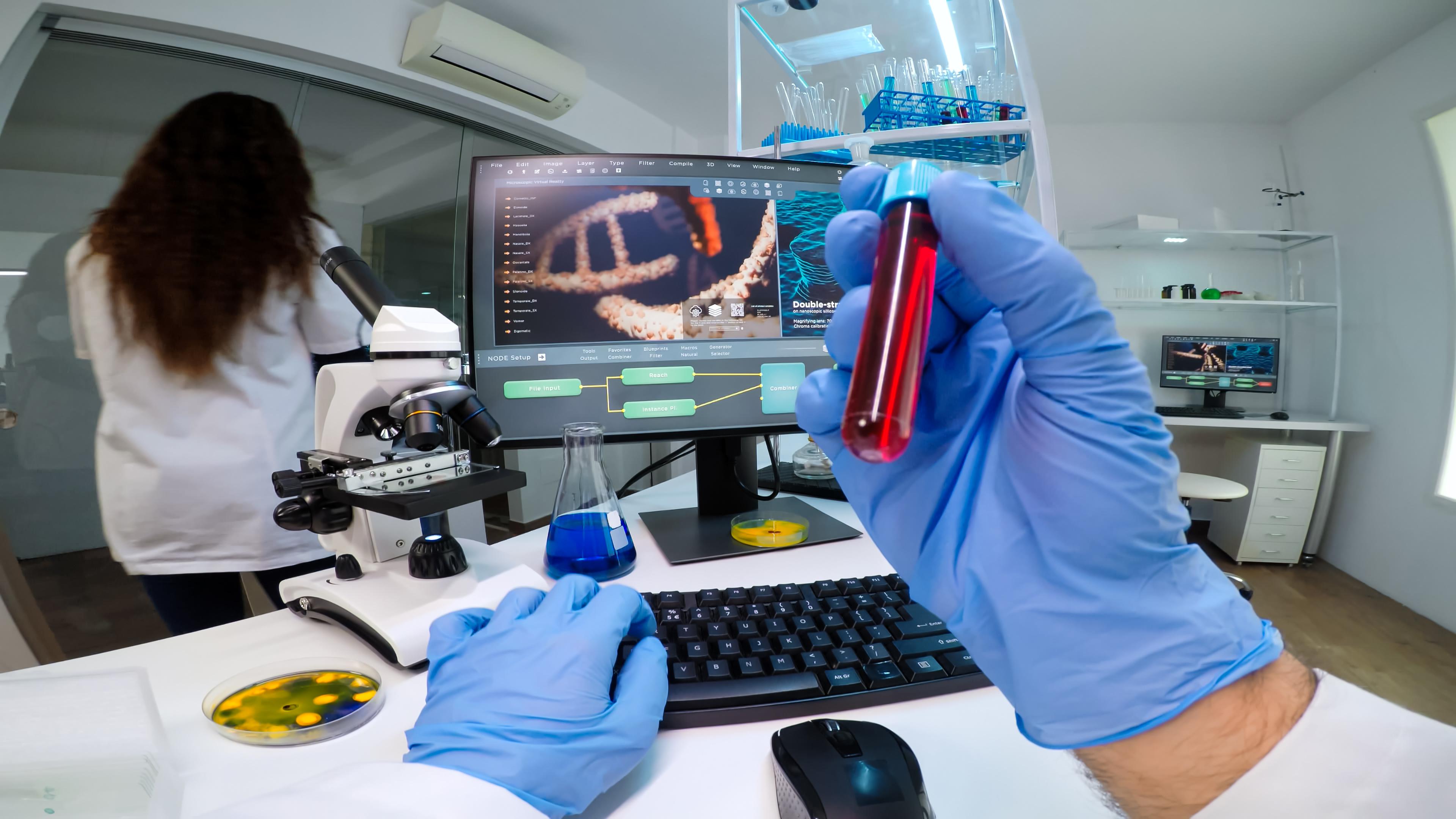Predatory publishing: Favoritism and self-promotion pollute peer review

- The peer review process — the system in which academic journals and scientists assess the quality of a study before it is published — is fundamental to fair and accurate research.
- Some academic journals take short-cuts in their peer review process and publish poorly designed studies.
- New research found that some academic journals publish large numbers of studies authored by members of the editorial board, suggesting a pattern of favoritism.
In August 2020, a team of French scientists, French President Emmanuel Macron’s Labrador retriever, and a pangolin published a remarkable finding in the Asian Journal of Medicine and Health (AJMAH): Hydroxychloroquine (a drug used to treat malaria and lupus) is incredibly effective at reducing scooters accidents. The authors concluded, “We need to use [hydroxychloroquine] more, everywhere, all the time, all around the world. Because hydroxychloroquine is the hero the world deserves, but not the one it needs right now. So the detractors will hunt it. Because hydroxychloroquine can take it. Because it’s not our hero. It’s a silent guardian, a watchful protector. A dark knight.”
The article was retracted and is no longer available through AJMAH. However, if you would like to read it, it is archived here. The first author’s name is fake; the actual first author is Mathieu Rebeaud, a graduate student at the University of Lausanne. While the study is laughable, Rebeaud and his fellow authors were not making a joke. They were making a statement: the academic community has a problem in its editorial process.
Favoritism in peer review
The peer review process — the system by which editorial boards and scientists assess the quality of a study before it is published — is fundamental to fair and accurate research. Scientists pay academic journals hundreds, or even thousands, of dollars to carry out this process and publish their studies. But not all journals adhere to the same level of scrutiny. A common type of “predatory journal” accepts articles for review and publication (along with authors’ fees), but doesn’t perform the promised quality checks, resulting in the publication of low quality or unethical research.
According to a recent study published in PLOS Biology, there is another concerning type of predatory journal the academic community should be aware of: “self-promotion journals.” Clara Locher and her international team of researchers explored nearly five million academic articles from 5,468 biomedical journals, and they found that 5% of these journals showed patterns of exercising considerable bias and favoritism toward certain authors.
Rebeaud’s study was fake, but there is a real connection between scooter accidents and hydroxychloroquine: Didier Raoult, a microbiologist and director of the University Hospital Institute Méditerranée Infection in France. During an interview in February 2020, Raoult told TourMaG.com (a tourism magazine), “There are more deaths from scooter accidents in Italy than from the coronavirus.” In the same interview, Raoult went on to say that the rate of spread was very low and predicted the pandemic was coming to an end.
But the pandemic did not come to an end, or at least it hadn’t by July 2020, when Raoult published a controversial study in the International Journal of Antimicrobial Agents. In the study, Raoult and his team concluded hydroxychloroquine was an effective treatment for COVID. Despite major concerns highlighted by the scientific community (most notably, the study’s lack of controls), the study gained public notoriety, leading to more than 150 clinical trials across the world exploring hydroxychloroquine’s therapeutic potential for COVID. None have produced any evidence that hydroxychloroquine is effective in preventing or treating the disease.
Locher, a clinical pharmacologist at Rennes University Hospital, was suspicious of the study’s peer review process. Normally, this process takes several weeks, if not months. However, the peer review of Raoult’s paper was unusually fast, just one day.
To Locher, this speed is reminiscent of what one might expect from a predatory journal. She was not alone in her concern. The International Society of Antimicrobial Chemotherapy (ISAC), which owns the journal that published Raoult’s article, also expressed its concern, stating “[T]he article [did] not meet the Society’s expected standards.” However, ISAC also stated that the peer review process did adhere to the industry standard and assured readers that the editor-in-chief of this journal was not involved in the peer review process.
Why would it matter if the editor-in-chief, Jean-Marc Rolain, was involved? Rolain worked at University Hospital Institute Méditerranée Infection and reported to Raoult. Also, Rolain was one of the authors of the paper.
While it is certainly suspicious that Raoult’s controversial study was rapidly published in a journal where the editor-in-chief was his employee, it does not necessarily indicate a pattern of favoritism. However, when Locher found that Raoult had published 235 studies in a single journal — New Microbes and New Infections (NMNI) — in just five years, she felt it warranted investigation. She found that Raoult is the most prolific author of the journal, contributing to 32% of the NMNI’s total articles. What’s more, the editor-in-chief and six associate editors worked for Raoult. To Locher, this suggested there might be some degree of favoritism.
Measuring favoritism
Based on this finding, the team of researchers hypothesized that the “percentage of papers by the most prolific author” (PPMP) could be used as an indicator of a journal with patterns of favoritism. In other words, if a journal’s PPMP is 32%, it means one author contributed 32% of a journal’s total articles (as was the case with Raoult), and it would suggest the journal showed favoritism to that author.
Locher and her team sought to determine if PPMP was a reliable indicator to detect favoritism. So, they surveyed articles published from 2015 to 2019 in 5,468 journals, representing 152 biomedical categories. In total, they surveyed 4,986,335 biomedical articles.
They found that 5% of the journals had a PPMP of 10%. The authors admit this doesn’t necessarily denote favoritism. Some journals represent tight research niches, where the contributing authors are part of a very small community of specialists. For example, The Cleft Palate-Craniofacial Journal only publishes articles regarding cleft palate and other craniofacial anomalies, and there are only a handful of such experts in the entire world.
However, if the most prolific author is also a member of the editorial board, it would be hard to argue that favoritism isn’t at play. So, Locher and her team selected 100 journals, at random, from the pool of the 5%. For 98 of those journals, the most prolific author was a part of the editorial board; for 25 of them, the author was the editor-in-chief.
Steering the wheel of research
In the academic community, having your work published is a badge of honor. It says, “My peers have critically reviewed my work and agree that I have made a meaningful contribution to our collective knowledge.” But when you remove the fair and critical peer review aspect from that equation, then a published paper simply may be nothing more than a person patting themselves on the back for shoddy research.
A self-inflated ego is not the main concern. The number of publications a scientist has can influence their job opportunities and grant funding. In other words, publications grant prestige and power — power to steer the wheels of research. In the case of biomedical research, when research is steered in the wrong direction, we pay the price with our health — as we witnessed during the case of hydroxychloroquine and COVID or the case of vaccines and autism.
While Kocher and her fellow researchers acknowledge their results are exploratory, they hope that it will lay the groundwork for identifying easily computed indicators of favoritism as a resource for publishers, authors, and the scientific community. To enhance trust in their practices, the authors argue that journals need to be more transparent about their editorial and peer review processes and commit to adhering to solid publishing guidelines. Journals need to fulfill their roles as knowledge custodians, rather than being mere knowledge distributors.





